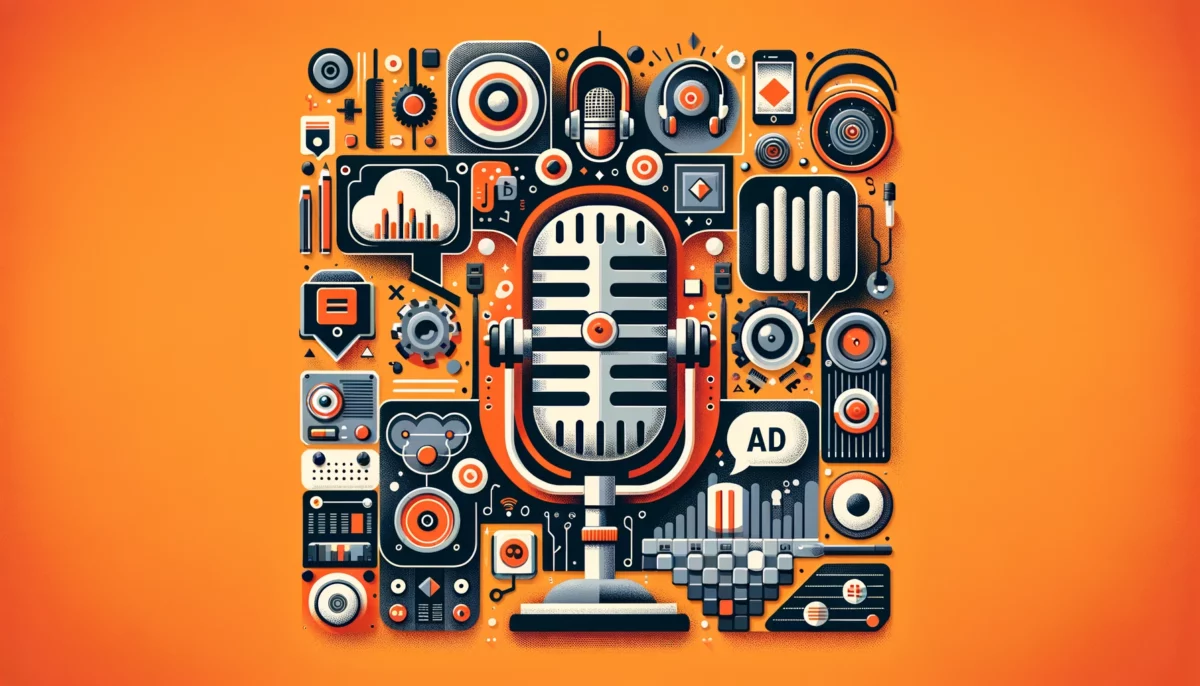In an era where consumers engage with content on the go and in multitasking environments, audio ads have emerged as a vital medium for connecting with audiences.
Offering a less intrusive yet highly engaging approach, audio ads leverage the power of immersive storytelling, targeting capabilities, and the rising popularity of platforms like podcasts and streaming services. From cost-effectiveness to the ability to create memorable brand identities through sound, audio ads play a crucial role in modern marketing strategies.
How to create a high-impact audio spot?
1. Script
As online platforms become more and more important, the need to craft better and more efficient audio ads increases. Having researched the matter and read expert advice, we’ve found that there is a consensus on the steps you should remember when creating audio ad scripts.
We’ve summarized them into the Three Stages of Audio Ad Scripts:
– Prepare
– Deliver
– Improve
Read more in How to Write an Audio ad Script
2. Voice-over
Context
Audio ads can be placed on both Music Streaming and Podcast platforms. The tone of the recording should match both environments, allowing your voice to effectively convey messages on music streaming platforms and podcasts alike.
Understanding the music streaming landscape:
As on music streaming platforms, users are immersed in an intense musical world, your audio ad must integrate perfectly into this environment. An enthusiastic delivery, coupled with swift pacing, is crucial to match the energetic tempo of music. By aligning your voice-over with the platform’s vibe and incorporating subtle musical elements, you can ensure your ad becomes an organic part of the listening experience.
Navigating the podcast experience
Regarding podcasts, the main difference is that they are longer conversational content. Here, your voice becomes an essential component of the ongoing discussions. Your delivery must align naturally with the podcast’s tone, seamlessly blending into the conversation. By ensuring your ad’s content aligns with the podcast’s subject matter, you contribute to a cohesive listening experience that adds value.
How to record an audio-ad
Voice-Over techniques for podcast and music ads
- Avoid editing or rushing the ad in post-production: if the script appears too long to fit a 30-second mark, provide this feedback to the client.
- Conversational immersion: Podcasts offer a unique space where listeners engage in longer, in-depth conversations. Your voice-over should blend seamlessly into this environment, sounding like a friendly and natural addition to the conversation.
- Avoid salesy tone: Listeners often respond better to ads that sound conversational rather than overly scripted or promotional.
- Narrative Alignment: Podcast ads should align with the podcast’s subject matter. Your voice-over becomes a part of the narrative, enhancing the listening experience rather than interrupting it.
- Natural Tone and Rhythm: Adopt a conversational tone that mirrors the casual yet engaging nature of podcasts. Your delivery should feel like a genuine dialogue with the listeners.
- The ads must provide a non-disruptive audio experience. We don’t want to take the audience out of the environment/mood they’re in as soon as the audio starts playing.
Audio Ads Samples
Check out middle age male voice over by Lonein Lara
Get young adult female voice over by Bianca Salinas
Discover young adult male voice over by Marshall James Lee
3. Audio Post Production
Crafting an effective audio ad involves careful consideration of music and sound effects. Here are best practices for integrating music and SFX into your audio ads:
Relevance to Brand and Message:
Choose music and sound effects that align with your brand identity and the overall message of the ad. The sonic elements should enhance the narrative rather than distract from it.
Set the Tone:
Use music to establish and maintain the desired emotional tone throughout the ad. Whether it’s excitement, nostalgia, or suspense, the music should complement the intended mood.
Consider Your Audience:
Understand your target audience’s preferences and choose music that resonates with them. Consider cultural and demographic factors to ensure that the sound is relatable and appealing
Avoid Overpowering the Voiceover:
Ensure that the music and sound effects don’t overshadow the voiceover. The primary message should be conveyed clearly, with music and effects serving as supportive elements.
Use Sound Effects Judiciously:
Incorporate sound effects strategically to emphasize key points, create impact, or add a touch of creativity. Avoid overusing sound effects, as this can clutter the audio and dilute their effectiveness
Maintain Consistency:
If your brand has established sonic branding elements, such as a jingle or specific sound effects, maintain consistency across different ads. This contributes to brand recognition.
Consider the Pacing:
Align the pacing of the music and sound effects with the overall flow of the ad. Changes in tempo or intensity can be used to build anticipation or highlight specific moments.
Test Across Listening Environments:
Test your audio ad in various listening environments, such as headphones, car speakers, and smart speakers, to ensure that the music and sound effects are clear and effective in different scenarios.
Create a Seamless Blend:
Aim for a seamless blend between the voiceover, music, and sound effects. Transitions should feel natural, enhancing the overall cohesiveness of the audio ad.
Tailor to Platform and Format:
Consider the platform where the ad will be played (radio, podcast, streaming) and tailor the sound elements accordingly. Different formats may have specific nuances that impact how music and effects are perceived.
Capture Attention Early:
Use a captivating musical intro or sound effect at the beginning to grab the listener’s attention. The first few seconds are crucial for setting the tone and engaging the audience.
Leverage Silence for Emphasis:
Don’t underestimate the power of silence. Strategic pauses can create emphasis and draw attention to important points in the ad.
More information about Audio Ad Production









